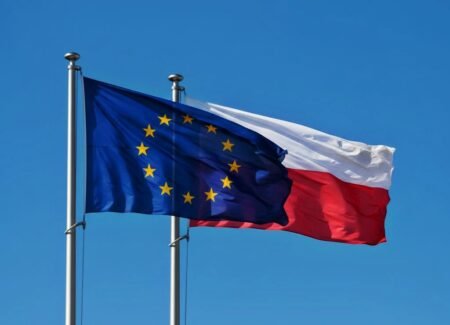The European Commission’s Action Plan to fundamentally reform corporate taxation in the EU and tackle tax avoidance, secure sustainable revenues and strengthen the Single Market for businesses includes a strategy to re-launch the Common Consolidated Corporate Tax Base (CCCTB), and a framework to ensure effective taxation where profits are generated.
Advertisement
What is the Common Consolidated Corporate Tax Base (CCCTB)?
The Common Consolidated Corporate Tax Base (CCCTB) was proposed by the Commission in 2011. It offers a single set of rules that cross-border companies could use to calculate their taxable profits in the EU, instead of having to deal with different national systems.
The primary goal of the CCCTB proposal was to strengthen the Single Market by making it easier and cheaper for companies to operate cross-border in the EU. It would enable them to file a single tax return for all their activities in the EU through one tax authority, rather than having to file a tax return in every country where they operate. The consolidation element in the CCCTB would also allow companies to offset losses in one Member State against profits in another (see section on offset losses).
However, the CCCTB could also be an important instrument to combat tax avoidance. It would eliminate many of the weaknesses in the current corporate tax framework which enable aggressive tax planning and would make corporate taxation in the EU much more transparent.
What are the benefits of the CCCTB?
The CCCTB, if adopted in its entirety, would provide a holistic solution to the main problems in corporate taxation in the EU today.
In particular, the CCCTB offers two major benefits:
1. It would significantly improve the business environment in the Single Market
Companies could use just one EU system to compute their taxable income, rather than having to deal with up to 28 national rulebooks. This would greatly reduce the administrative burden, compliance costs and legal uncertainties for cross-border companies.
It is estimated that the CCCTB could save businesses across the EU 0.7 billion per year in compliance costs and would reduce the costs of cross-border expansion by around 62%.
2. It would significantly help to combat tax avoidance in the EU
With a common base, all Member States would apply the same rules for calculating the taxable profits of cross-border companies.
This would eliminate the mismatches and loopholes between national systems, which companies currently can exploit. In addition, consolidation would remove the need for complex transfer pricing within the group, which is one of the main vehicles for profit shifting at the moment.
From a global perspective, the CCCTB is a solid framework for Member States to implement many of the new international tax standards being agreed through the OECDs international project to tackle Base Erosion and Profit Shifting (BEPS).The CCCTBs common anti-avoidance measures would also defend the Single Market against base erosion and profit shifting to non-EU countries.
Finally, the common base would introduce complete transparency on the effective tax rate of each Member State, as it would remove all the opaque and preferential tax regimes that currently exist in national systems. As such, it would reduce the scope for harmful tax competition.
Why has the Commission decided to re-launch the CCCTB?
The CCCTB responds to some of the EU’s top political priorities. It can make a strong contribution to growth, competitiveness and fairness in the Single Market.
However, after four years of technical discussions in Council, it is clear that the original CCCTB proposal is too ambitious to be adopted in a single step. Discussions on more difficult aspects of the proposal notably consolidation are holding back progress on other important areas, which could be agreed more quickly. In addition, the CCCTB proposal needs to be adjusted to be truly effective in tackling current corporate tax challenges, notably tax avoidance.
Given the important benefits that a CCCTB could bring, the Commission has decided to re-launch it in an adapted form to move negotiations forward. There has been broad support from many Member States, the European Parliament and stakeholders for a re-launch of the CCCTB.
What will be the main changes in the re-launched CCCTB?
The Commission will present a new CCCTB proposal in 2016 with the following key features:
A mandatory CCCTB:
The Commission will propose a mandatory CCCTB, at least for multinational companies. When the CCCTB was proposed as an optional system the primary focus was on simplifying the tax environment for businesses in the Single Market. Since then, the CCCTB’s potential as an anti-avoidance tool has been more widely recognised.
However, large companies that benefit from the current loopholes are unlikely to opt in. For the CCCTB to have a real impact in preventing tax avoidance, it must be mandatory – at least for the type of companies most likely to engage in aggressive tax planning.
A step-by-step approach:
The original proposal will be broken into smaller, more manageable stages to make it easier for Member States to agree.
In the first step, consolidation will be postponed, as this has been the most difficult element in negotiations so far. This should allow Member States to progress more quickly on other aspects of the CCCTB, particularly the common base and international elements to prevent base erosion and profit shifting.
Once the common base is secured, consolidation will be introduced as the second step.
What are the international aspects in the CCCTB that could be agreed quickly, and how do they tie in with the OECD BEPS project?
The CCCTB proposal includes certain anti-avoidance measures, which are also discussed as part of the BEPS project. These include updated rules on Permanent Establishment, so that companies must have a taxable presence in a Member State where they have economic activities and improved Controlled Foreign Corporation rules, which ensure that profits parked in low or no tax companies are effectively taxed. These aspects of the proposal can significantly help to protect the Single Market from base erosion and profit shifting towards non-EU countries.
Member States are very keen to agree on a single EU approach on these issues to avoid the problems that 28 divergent national approaches could cause. An EU approach to implementing these international anti-avoidance aspects would ensure legal certainty and coherence in the Single Market, and a strong, common defence against profit shifting out of the EU.
What would a C(C)CTB without consolidation mean in practice?
A common corporate tax base would still make it cheaper and simpler for businesses to operate cross-border in the Single Market, even without consolidation. It would remove significant corporate tax obstacles that currently exist e.g. high compliance costs in dealing with up to 28 different sets of rules.
A common base would make corporate taxation in the EU more transparent and efficient. It would no longer be possible for Member States to have hidden elements in their tax bases, which can lead to harmful tax competition and profit shifting. The CCCTB would also remove the mismatches and loopholes between national tax systems, which are frequently exploited by aggressive tax planners.
Nonetheless, consolidation remains a firm goal for the long term. It would eliminate major tax obstacles for businesses, as well as opportunities for tax avoidance, such as those created by the complex transfer pricing system.
In addition, consolidation would allow companies to offset losses in one Member State against profits in another. This means that losses that the group makes in one Member State could be used to reduce the profits that the group is taxed on in another Member State. Consolidation would also allow companies to file a single tax return for all EU activities through one administration (in their own language). This would reflect the true spirit of a Single Market.
The Action Plan has set out measures to compensate for the lack of consolidation in the short-term, until the full CCCTB is in place. For example, it foresees cross-border loss offset (see below) and a review of the transfer pricing system.
What is cross-border loss offset, and how does it fit with the CCCTB?
The Commission will propose cross-border loss offset for companies in the EU. With cross-border loss offset, a parent company in one Member State would be able to receive temporary tax relief for the losses of a subsidiary in another Member State. This is particularly important to support start-ups and business expansion in the Single Market, as it would ensure that their cross-border activities enjoy the same loss offset treatment as purely national activities.
Once that subsidiary became profitable, the Member State in which the parent company is established would “recapture” the taxes that it relieved during the loss phase. As such, no Member State would have to carry the long-term burden of an unprofitable company in another Member State.
Cross border loss offset would deliver many of the same benefits for businesses as the loss relief linked to consolidation in the CCCTB. However, consolidation is a much more substantial project, that would fundamentally change how corporate profits and losses are allocated between Member States, with a definitive effect on Member States’ revenues. As such, consolidation has been one of the most controversial aspects of the CCCTB for Member States, and will be postponed for the immediate future.
Therefore, the purpose of the cross border loss offset will be to allow businesses a basic system for loss relief which is less contentious for Member States until the ultimate goal of consolidation is achieved.
Is the CCCTB a first step towards the harmonisation of tax rates?
No. The CCCTB is not about tax rates. Member States will continue to decide their own corporate tax rates, as is their sovereign right. What the CCCTB will do, however, is create more transparency with regard to the effective corporate tax situation in Member States, thus creating fairer tax competition within the EU.
How likely is it that Member States will agree on a revised CCCTB, when they could not agree on the original proposal?
Member States gave their broad support for re-launching the CCCTB, when the Commission consulted them on it earlier this year. There is very strong political interest in finding effective new tools to combat tax avoidance and enhance EU competitiveness. A mandatory CCCTB would deliver on both fronts. The new CCCTB proposal will reflect discussions in the Council over the past four years, as well as the Commission’s consultations with Member States and stakeholders, in order to maximise the chances of a timely adoption.
Is this proposal in line with the principle of subsidiarity?
Yes. The legal base for the CCCTB is Article 115 TFEU i.e. improving the functioning of the Internal Market.
The CCCTB is all about removing obstacles to the Single Market, making it cheaper and easier for businesses to operate cross-border. This is not something that can be done at purely national level, through unilateral, uncoordinated action by Member States.
The CCCTB’s link to fighting tax avoidance also has a clear Internal Market angle, given the cross-border nature of the problem and the fact that national mismatches and Treaty freedoms are exploited by aggressive tax planners.
Annex
CCCTB: An acronym explained
Common Corporate Tax Base One single set of EU rules to decide how much of a company’s profit will be taxed, once various exemptions and income deductions have been accounted for.
Example:
Member State A may allow assets to be depreciated over 10 years, for tax purposes, while Member State B might allow it as quickly as over five years. Or Member State A might allow all entertaining expenses to be tax deductible, whereas Member State B might not.
A common corporate tax base would mean that these rules would be the same throughout the EU, and companies only need to do their calculations based on one set of tax rules.
Without consolidation, the company would need to do a separate calculation and tax return for each Member State in which it has a taxable presence. However, this would still be easier than today, as the rules for this calculation would be uniform across all Member States.
Consolidation All profits and losses from the companies of a group in different Member States would be added up, to reach a net profit or loss for the group’s entire EU activity. Based on this net figure, the common rules would be used to decide the final tax base of the group.
Example:
A group consists of companies A, B, C and D, each in a different Member State.
Companies A and B have profits equal to 10 million each;
Company C has profit equal to 5 million;
Company D has a loss equal to 8 million.
The consolidated tax base (net profit) for this group is A+B+C-D = 17 million.
This tax base (i.e. the company’s taxable profits) would then be shared out between the Member States in which the company is active, according to an agreed formula. Each Member State would tax their share of the profits at their own national rate.







